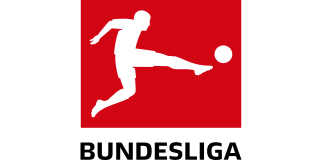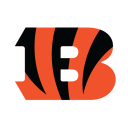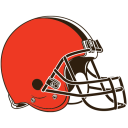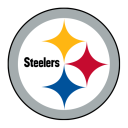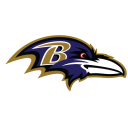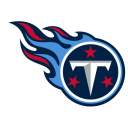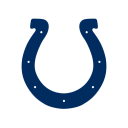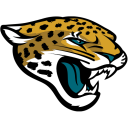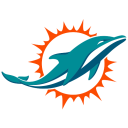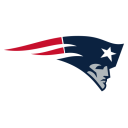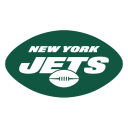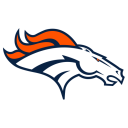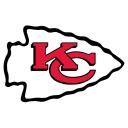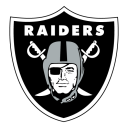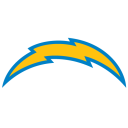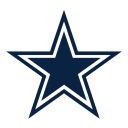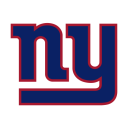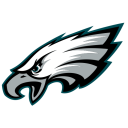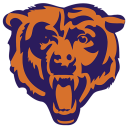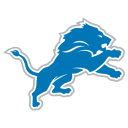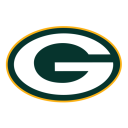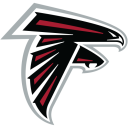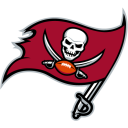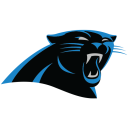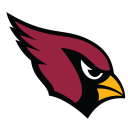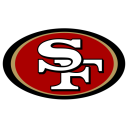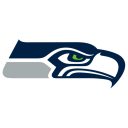Adam Silver interview: The NBA looks to the future
We spoke with NBA commissioner Adam Silver about the league's upcoming media rights negotiations, which will usher the NBA into the streaming era.
This story first appeared in Yahoo Sports AM, our daily newsletter that keeps you up to date on all things sports. Sign up here to get it delivered to your inbox every weekday morning.
As the NBA embarks on its 78th season, there's plenty of intrigue surrounding its players and teams. But no matter what happens on the court over the next several months, the biggest story in professional basketball will be what happens off of it.
The big decision: The NBA will soon be faced with a question that comes up roughly once every decade: which companies will get to broadcast its games?
Media rights negotiations are a critical juncture for sports leagues, whose players, owners, business partners and fans are all directly impacted by them.
With the NFL, MLB and NHL already locked up long-term, the NBA will be the last major U.S. sports property on the market — right as the streaming era arrives in earnest.
Where it stands: Disney (ESPN/ABC) and Warner Bros. Discovery (TNT) currently pay the NBA $2.7 billion a year to air national games under an agreement that was signed in 2014 and ends after the 2024-25 season.
The NBA's international deals and some of its local deals are also expiring, giving the league maximum flexibility to chart a course into the future media landscape that looks much different than it did in 2014.
Tech giants are now major players in the media rights space, and streaming viewership recently surpassed cable. As a result, what was once a relatively simple decision for the NBA ("this channel or that channel?") is now far more complex.
How many games should be on TV vs. streaming? What do broadcasts look like on these streaming platforms? How do you reach more zoomers without alienating boomers? These are all questions without easy answers.
What I'm hearing: The NBA can't formally negotiate with new partners until April, when its exclusive window with Disney and WBD expires. But preliminary talks are taking place, and the NBA is reportedly seeking to triple its 2014 deal (so something in the $7-8 billion range annually).
Much of the buzz is around streaming, with Amazon, Apple and Google all firmly in the mix, per sources. Even Netflix, which will stream its first live sports event next month, has emerged as a potential bidder.
Most expect Disney and WBD to re-up with the NBA, though they're considering smaller packages, per WSJ. NBC may also bid after more than two decades away, and Fox and CBS can't be ruled out.
Why all of this matters: Rights negotiations are always momentous occasions because (a) they happen so rarely and (b) they have a substantial impact on league revenue, which ultimately determines player salaries, team spending and franchise valuations.
The NBA generated over $10 billion in revenue for the 2021-22 season, and nearly 30% came from Disney and WBD.
That makes media rights the league's primary revenue source, well ahead of ticket sales, sponsorships and merchandise.
The bottom line: In 2002, the NBA moved most of its games from over-the-air TV (NBC) to cable (ESPN/TNT) in a deal that helped birth the cable era. Two decades later, the league finds itself at the forefront of another revolution.
Adam Silver: Four areas of focus
I asked NBA commissioner Adam Silver how the league is thinking about future media partners. He laid out four key areas of focus: Reach, Viewer Experience, Discoverability and Accessibility.
1. Reach: The NBA is bullish on streaming and its ability to reach a younger audience, but the league still plans to have a significant presence on broadcast (ABC, NBC, CBS, Fox) and cable (ESPN, TNT, etc). "My hunch is we're moving into a hybrid world," says Silver.
"In our current paradigm, it's meaningful to us that our Finals are still on network TV, that we have a significant complement of games on network TV, and that virtually all of our other games are on basic cable."
"Now, of course, we're paying attention to the fact that not only is the basic cable universe decreasing, but the demographic of that audience is changing as well. It's beginning to look less like America — older and less diverse — and the NBA has a particularly young and diverse audience."
"So we recognize that, in some ways, the decline of cable has disproportionately impacted the NBA. Our young audience isn't subscribing to cable, and those fans aren't finding our games."
"But there are still roughly 65 million homes in America that are consuming sports in a very traditional way, and even more people on network TV. Is that declining? Yes. Is that going away anytime soon? I don't believe so. So we want to be on all of those platforms."
2. Viewer experience: The commissioner's eyes light up when he talks about the future of live sports broadcasts, which have remained largely the same for many decades ("with the significant exception of the advent of high-definition," he says).
"The experience that most viewers have is a very passive one [with] a producer and director choosing the camera angles and video feeds. What I'm most excited about is the opportunity to reinvent that."
"People will pick from a menu of unlimited audio feeds and camera angles. There will be a sports betting component … merchandising ... Enormous amounts of customization and personalization."
"This is no knock on anything that's happening now, because the technology wasn't available. But I think what we're going to see over the next five years is a reinvention of the way we deliver sports."
3. Discoverability: Today's fragmented TV/streaming environment can make it difficult to find live games. Silver seems acutely aware of this, which perhaps suggests the NBA would prefer to only add a third media package rather than two more, as some experts have suggested.
"I understand the frustration of fans when they have to Google the matchup to find out where to watch it. And frankly, even then it's not always so clear because [Google's search engine] isn't optimized as a viewer TV guide. So it can be confusing."
"Even when games are on widely-distributed networks, whether they're national or local, we recognize that they can be hard to find as they bounce around a lot and are not consistently in one place."
4. Accessibility: To explain this one, Silver used the example of a fan scrolling X and seeing that Steph Curry is having a record-breaking game. "If we make accessibility very simple — click and now you're watching — we think that will lead to a real surge in viewership." He later expanded on this idea by imagining the most accessible future imaginable...
"If I'm a big fan of Victor Wembanyama, any game he's playing in would just begin on the homepage of my phone because I've set it that way. It requires zero effort on my part."
"If you're a Pacers fan, there's no reason that when a Pacers game comes on, it shouldn't start to play on your lock screen. Or maybe you only want it beginning in the third quarter, whatever it is."
National rights: The contenders
Now that we know the NBA's top priorities, we can assess which potential partners are best positioned to help achieve those goals. Let's meet the contenders.
TV contenders:
Disney: ESPN dramatically scaled back its most recent MLB deal, paying nine-figures less and giving up weeknight rights. Don't expect the company to cede that kind of ground here. "We hope to [have] a package that looks pretty similar to what we have now," ESPN's president of content Burke Magnus told The Athletic in August.
WBD: CEO David Zaslav has been on a cost-cutting crusade and says the company's next NBA deal "will probably look a little bit different." But it's hard to imagine this long-time partner (40 years!) reducing its role too much given that it helps power NBA TV, has the league's flagship show ("Inside the NBA) and just added live sports to Max.
NBC: "Roundball Rock," anyone? NBC has a rich history with the NBA, having aired games during the Michael Jordan Era (1990-2002). There's more flexibility this time around with USA Network and Peacock, and there's a belief that a "Sunday Night Basketball" program could follow "Sunday Night Football" once the NFL regular season ends.
Streaming contenders:
Amazon: Prime Video has proven itself with "Thursday Night Football" and is interested in doing something similar for the NBA, according to sources close to the company. Scroll back up and read Silver's description of a redefined viewer experience (multiple feeds, merchandise, etc). Sounds a lot like Amazon, doesn't it?
Google: The NBA was the first league to launch its own YouTube channel in 2005, so this relationship goes way back and the NBA values YouTube's young, global audience. YouTube TV is also the presenting sponsor of the NBA Finals and has reportedly impressed NBA executives with its handling of "NFL Sunday Ticket."
Apple: Apple is getting serious about sports, acquiring worldwide rights to MLS and partnering with MLB on "Friday Night Baseball." It would offer the NBA access to hundreds of millions of people globally and its hardware and software could deliver the kind of accessibility Silver mentioned above (the Wemby/Pacers lock screen example).
Netflix: For years, co-CEO Ted Sarandos said Netflix had no interest in live sports. But over the past 18 months, the company has bid on F1 racing rights, explored buying tennis rights, and announced its first live sports broadcast. While Netflix isn't viewed as a serious bidder for domestic NBA games, it could seek a smaller international package.
What Silver is saying: I asked the commissioner if he had any comment on so many streamers being interested in NBA rights. He didn't reveal much, but I did find it interesting that he voluntarily brought up Google.
"I'll just say, I think we're the only league that has had a relationship with YouTube since prior to Google acquiring them. … This relationship goes back a long way, and I'm rooting for all the other leagues to build on these relationships, whether it's MLS with Apple or the NFL with Amazon."
International rights: The global game
The NBA's international rights are also set to expire after the 2024-25 season — a particularly intriguing component for a league that has a record 125 foreign-born players on opening-night rosters.
"If you look at Netflix's growth strategy, a majority of their growth is coming from outside the U.S. right now. So we think [our international players and audience] makes us particularly attractive to these global streaming services with ambitions of going market-by-market."
"I've been with the league for over 30 years now and spent a large part early in my career selling NBA programming globally. I could never have even imagined a scenario like this where we're distributed in roughly 215 countries and territories — and that there could potentially be one-stop shopping to deliver to an entire world."
"I was telling this story to [Amazon CEO] Andy Jassy when I ran into him last summer … We opened an office in Lagos, Nigeria, and my colleague, deputy commissioner Mark Tatum, noticed there were billboards everywhere for the new season of 'The Marvelous Mrs. Maisel.'"
"It just goes to show the universality of content. And when it comes to premium sports, nothing cuts across borders like we do. Just to throw a few numbers out there: Our estimates are that roughly 2 billion people on a planet of 8 billion engaged with our content last season."
Local rights: The demise of RSNs
We've covered national and international rights. Now let's talk about the local broadcast model, which could use some adjusting.
What's happening: Diamond Sports Group, which operates the Bally Sports regional sports networks (RSNs) that televise 15 NBA teams, is currently in bankruptcy court.
The NBA is prepared to take over production and distribution if that situation goes south, and the league would offer a streaming option for fans in those markets just like MLB did with the Padres this summer when Diamond stopped broadcasting their games.
The Suns and Jazz have already established a similar model, moving their games off RSNs and onto free, over-the-air broadcast networks along with a subscription streaming option. Jazz+ costs $125.50 for the year, with individual games starting at $5.
The long-term vision: There's a growing belief that the NBA will eventually take over all local broadcasts and put them in one place, similar to what Apple has done with MLS (or what the NBA does with League Pass, minus the local blackouts). Here's what Silver had to say:
"I think what's lost sometimes is that local games are the most powerful and popular NBA programming in the U.S. People love their hometown teams, and [local broadcasts] will continue to be a vital part of our business."
"But there's no doubt there needs to be a reinvention [and] a fix in terms of the delivery system. … If you're a fan of your local team, you should be able to go to the NBA App or whoever our partner is and click and get that game for a reasonable fee."

 Yahoo Sport
Yahoo Sport 




